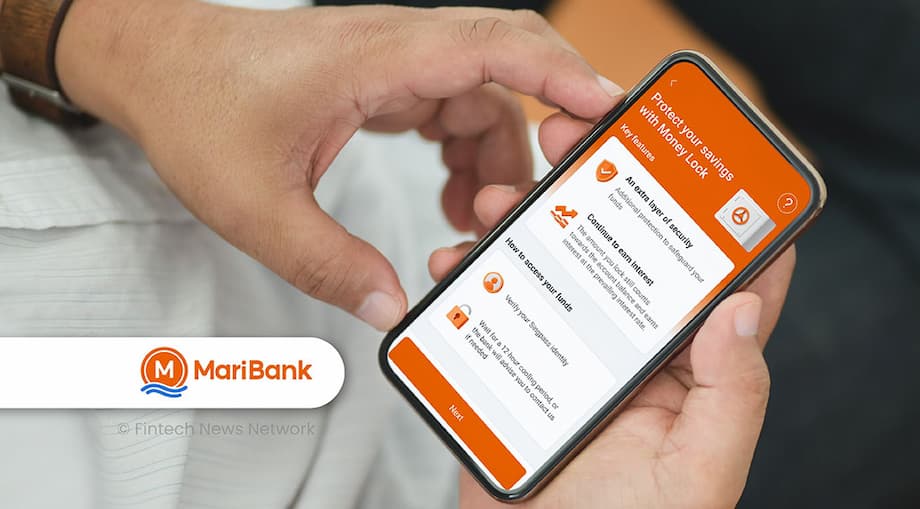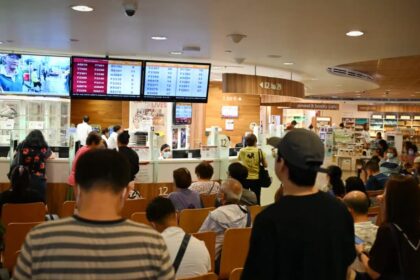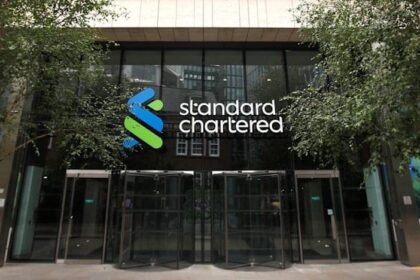Rapid adoption amid rising scam losses
Singapore bank customers have locked more than S$30 billion to keep their savings out of reach of scammers, with over 370,000 people using money lock tools as of June 30. The figures reflect a swift take up across the country since the feature debuted in late 2023, and they underscore how seriously both banks and customers are treating the surge in phishing, malware and social engineering scams. The core idea is simple. People can ringfence part of their deposits inside their bank account, and those locked funds cannot be moved digitally even if a criminal gains control of the person’s phone or online banking credentials.
- Rapid adoption amid rising scam losses
- How the money lock feature works
- Which banks offer it and how their approaches differ
- Who is using money lock and how much do they secure
- Evidence the feature is preventing losses
- What money lock does not stop, and the wider anti scam playbook
- Practical steps to use money lock well
- What comes next for banks and customers
- The Bottom Line
The first versions launched in November 2023 at DBS, OCBC and UOB. By mid 2024 the feature had spread to other major retail players, including Citibank, CIMB Singapore, Bank of China Singapore, Standard Chartered, Maybank and HSBC. In 2025, digital banks serving retail customers, such as GXS Bank, MariBank and Trust Bank, began rolling out their own versions. The Monetary Authority of Singapore (MAS) has coordinated with banks to expand money lock options across the industry and to refine how customers set up and unlock their funds.
Adoption accelerated as scam losses mounted. The Singapore Police Force reported scam related losses of about S$1.1 billion in 2024, and official data pointed to at least S$385.6 million lost in the first half of 2024 alone. Against that backdrop, MAS and the banking sector have leaned into tools that create more friction for risky actions, especially those initiated on compromised devices. Money lock sits at the center of that push, alongside stronger authentication, transaction alerts and kill switch freezes that stop all digital banking until a customer can regain control.
How the money lock feature works
Money lock lets customers choose an amount in their existing account, or in a linked account, that cannot be moved out through online or mobile banking. Transfers, payments and digital withdrawals are blocked for the locked portion. The only way to access that money is to unlock it using a more secure method, usually a physical step that criminals cannot complete remotely. Banks designed the process to slow down high risk actions and to make any attempted theft fail without an in person check. Locked funds continue to earn the prevailing interest rate in the relevant account. In some cases, such as certain bonus interest accounts or time deposits, the locked funds keep their bonus interest terms as well.
Unlocking flows vary by bank. Some require a visit to a branch with identity documents. Others allow unlocking at an ATM using a physical card and PIN. Several institutions impose a cooling off period before funds can be withdrawn after unlocking. Digital banks have added their own safeguards, such as requiring a card tap on a phone with near field communication and an additional passcode, and then forcing a waiting period before a withdrawal can occur. The goal is the same across the industry. A thief who has tricked a victim into loading malware or handing over one time codes cannot access the ringfenced funds because the final step requires either the account holder’s physical presence or a control that a remote attacker cannot satisfy.
MAS said early in the rollout that banks were refining the user experience, for example enabling customers to lock money within the same account rather than requiring a separate account. The regulator told Parliament that locked balances were safe from the phishing and malware schemes that had been plaguing users. As the central bank put it in an official reply, there had been no cases of funds under money lock being taken by those methods.
To date, there have been no reports of phishing or malware scams involving funds under Money Lock.
That combination of extra friction and reassuring results helped drive adoption through 2024 and into 2025.
Which banks offer it and how their approaches differ
Today, money lock is available across Singapore’s major retail institutions. The three local incumbents, DBS, OCBC and UOB, were first movers. By late 2024, Citibank, HSBC, Maybank and Standard Chartered joined in, and Bank of China Singapore and CIMB Singapore also launched their versions. In 2025, digital banks GXS Bank, MariBank and Trust Bank entered the picture with tools built around their own app experiences and authentication methods. The result is wide coverage for retail customers, with options that reflect each bank’s product design and risk controls.
Local banks DBS, OCBC and UOB
DBS calls its version digiVault. After early pilots that required a separate vault account, DBS expanded the tool so customers can lock funds within their existing account and keep earning prevailing interest. The bank reports strong uptake across demographics, and it has continued to build out self managed security controls alongside money lock. Unlocking generally requires an in person step at a branch, which creates a deliberate pause before funds can be withdrawn.
OCBC integrated money lock into current, savings and time deposit accounts. In the first two months after launch, more than 30,000 customers used the feature to lock over S$3.3 billion. OCBC later extended the function to time deposits, allowing customers to block digital access to fixed deposits and to unlock them at ATMs with a card and PIN or at a branch. Adoption kept climbing through 2025. As of late August, OCBC reported nearly S$13 billion locked across more than 108,000 accounts. The bank says most people lock excess funds, while keeping a buffer unlocked for bills and emergencies.
UOB initially required customers to set up a dedicated money lock account and indicated it was exploring support within existing accounts. Unlocking is available via ATMs. The bank said it had over 160,000 users by the end of July, reflecting strong interest from customers who prefer to split daily spending and longer term savings. UOB has also highlighted cases where money lock limited losses when a victim began transferring money under the influence of a scammer.
Foreign banks and other retail players
Standard Chartered, Maybank and HSBC brought money lock online by late 2024, aligning with industry guidance. Citibank reported more than 500 users in the first half of 2025 as it gradually rolled out the feature in Singapore. CIMB Singapore said more than 6,400 customers had secured over S$310 million through its version. Bank of China Singapore reported more than 5,000 accounts using the tool. While the precise unlocking steps differ, all require stronger controls than the digital workflows criminals try to exploit.
Digital banks and new technology
Trust Bank’s Trust Lock adds a layer of device based and card based checks. Customers can lock individual savings pots, and any withdrawal requires a tap with a physical Trust card on an NFC enabled phone and a six digit Trust Key, followed by a mandatory 12 hour pause before the money can move. For those without NFC phones, Trust requires identity checks at its experience center. GXS Bank and MariBank also introduced money lock in 2025 to give their customers access to a similar safety net. These approaches share a common purpose, stop remote attackers who control a phone from pushing out high value transfers from the locked portion.
Who is using money lock and how much do they secure
Adoption cuts across age groups, with a slight tilt toward middle aged and older customers. Early data tabled in Parliament in 2024 showed customers aged 50 and above accounted for about 44 percent of users, while those between 30 and 50 made up roughly 41 percent and those under 30 were about 15 percent. By October 2024, MAS said customers aged 30 to 49 made up the largest share at 43 percent, those above 50 accounted for 42 percent, and younger users remained at 15 percent. Customers in the 50 and above group tend to lock larger sums, a sign that retirees and pre retirees are using money lock to protect lump sum savings.
The growth curve has been steep. In February 2024, shortly after launch, there were more than 61,000 money lock accounts with over S$5.4 billion protected. By March 2024, total locked funds reached S$6.6 billion across more than 78,000 accounts. At the end of October 2024, MAS said more than 181,000 customers had locked about S$15.8 billion. By May 31, 2025, more than 350,000 customers had locked nearly S$28 billion. The latest figures point to over 370,000 users and more than S$30 billion locked by the end of June.
How people use the feature also matters. OCBC says more than 70 percent of its money lock customers have secured more than S$10,000, yet more than half still keep at least S$10,000 unlocked for day to day needs. Fewer than 1 percent lock all their funds. This pattern reflects the feature’s purpose. People put longer term savings behind a stronger gate while keeping enough accessible for bills and emergencies. Because locked balances still earn interest, customers do not give up returns in exchange for security.
Evidence the feature is preventing losses
In its October 2024 update, MAS highlighted how money lock had already stopped larger losses in cases where a victim began to transfer money under pressure from a scammer. UOB described a customer who sent S$700 to a suspicious account, then tried to send more. Because S$50,000 was protected behind money lock, the larger transfer never took place. That pause also gave the customer time to step back and reassess what was happening.
A Straits Times report detailed how a retiree in her mid 60s, referred to as Kelly, lost about S$33,000 after clicking a fake social media ad that led to a sideloaded app carrying malware. The scammers gained control of her phone and siphoned money from unlocked accounts. They could not touch the more than S$110,000 she had secured with OCBC’s money lock, which required unlocking at a branch or ATM. That case, one of the earliest confirmed examples, showed how money lock can prevent a total loss even when attackers have full access to a victim’s device.
MAS said in a February 2024 parliamentary reply that there had been no reported cases of phishing or malware scams taking money from locked balances. While scammers still succeed in manipulating victims to make authorized transfers from unlocked funds, money lock reduces the amount at risk at any moment and increases the chance that a victim or bank staff can intervene before larger sums move.
What money lock does not stop, and the wider anti scam playbook
Most scam losses in Singapore involve authorized transfers. A victim thinks they are paying a seller, a love interest, a job recruiter or an official. They send money willingly, even as bank staff warn them to stop. Money lock cannot prevent a transfer that the legitimate account holder confirms from the unlocked portion. This is why MAS and banks have added other measures to slow down risky actions and to alert people when something looks off. Over the past year, banks phased out SMS one time passwords for digital logins for customers using digital tokens, cutting off a common phishing path. Several banks introduced warnings for large value transfers, asking customers to think again before proceeding. MAS has encouraged institutions to use cooling off periods for high risk changes, such as increasing transfer limits or changing contact details.
In June 2025, banks switched on enhanced fraud surveillance under the Shared Responsibility Framework, monitoring for fast outflows and other behaviors that signal potential scams. The central bank is also working with institutions on stronger user authentication for higher risk online actions, including a hardware security token for certain payments that must be physically connected to a device. Singapore also strengthened enforcement powers. Police can now freeze the accounts of suspected scam victims without their consent in order to stop further losses while investigators and banks reach the person and verify what happened.
Banks have upgraded their app defenses too. If a suspicious app is detected on an Android device, several banking apps now restrict access. DBS added a control in 2025 requiring customers to toggle on permission before adding a card to a mobile wallet, creating an extra pause that has already helped reduce card on file fraud. These moves reflect a wider policy stance. MAS leaders have said Singapore must choose security over convenience when necessary because criminals are quick to exploit any gap. The overall aim is to add speed bumps for risky actions while keeping day to day banking straightforward.
Practical steps to use money lock well
Money lock works best when paired with a few simple habits. Customers can reduce their exposure while still keeping enough flexibility for everyday needs.
- Decide how much to ringfence based on monthly spending and an emergency buffer. Many customers lock only excess savings.
- Use separate pockets for different goals. Keep daily spending in one account and put longer term savings behind money lock.
- Write down the unlocking steps for your bank. If a branch visit or ATM is required, plan for the time it takes and the documents you need.
- Avoid installing apps from outside official stores. If your phone prompts you to disable security settings, stop and seek help.
- Turn on transaction alerts and set lower transfer limits for daily use. Raise limits only when needed and then lower them again.
- Use the bank’s kill switch if you suspect a compromise. This freezes digital access while you secure your device and account.
- Be sceptical of anyone pushing you to move money quickly. Banks and government agencies will not pressure you to transfer funds to “safe” accounts.
What comes next for banks and customers
The industry expects adoption to continue climbing in the months ahead. As more banks refine their unlocking flows and extend support to more account types, customers have more ways to protect larger balances without sacrificing interest. Digital banks are experimenting with device and card checks, and they are layering in timed delays that make remote theft harder. At the same time, MAS has indicated it does not plan to mandate money lock across all institutions, choosing instead to encourage adoption and monitor outcomes. The regulator is also testing stronger authentication for higher risk transactions and asking banks to build more speed bumps into activities that scammers commonly target.
Trust Bank’s use of NFC taps plus a passcode and a 12 hour wait shows how new controls can be added without making ordinary banking impossible. DBS has expanded self managed security tools, including in app permission checks that create deliberate pauses when criminals try to add cards to mobile wallets. More banks are adopting pre transfer warnings for unusual or large movements. Across the system, the priority is putting more checks between a compromised device and a high value transfer, while giving customers clear education on how to spot scams and where to get quick help.
Money lock is not a silver bullet. It is one layer in a defense in depth strategy that now spans device checks, alerts, cooling off periods and greater authority for police and banks to intervene when a scam is in progress. As adoption grows, the feature’s greatest value may be how it limits losses when everything else goes wrong, and how it gives people a vital pause to think before a large sum leaves the account.
The Bottom Line
- More than 370,000 people in Singapore have used money lock tools, securing over S$30 billion as of June 30.
- Local banks launched the feature in November 2023, and most major retail banks plus digital banks now offer it.
- Locked balances cannot be moved digitally and usually require an ATM or branch visit to unlock, often with a waiting period.
- MAS reported no cases of phishing or malware taking money from locked funds in early 2024.
- Most users lock excess savings and keep a buffer unlocked for bills and emergencies.
- The feature has already limited losses in real cases by blocking large transfers after an initial small payment.
- Money lock does not stop authorized transfers from unlocked funds, so banks and MAS added warnings, cooling off periods and stronger authentication.
- Police can freeze suspected victim accounts to stop ongoing scams while cases are verified.
- Adoption is rising as banks refine the feature and expand it to more account types, with MAS encouraging use but not mandating it.












